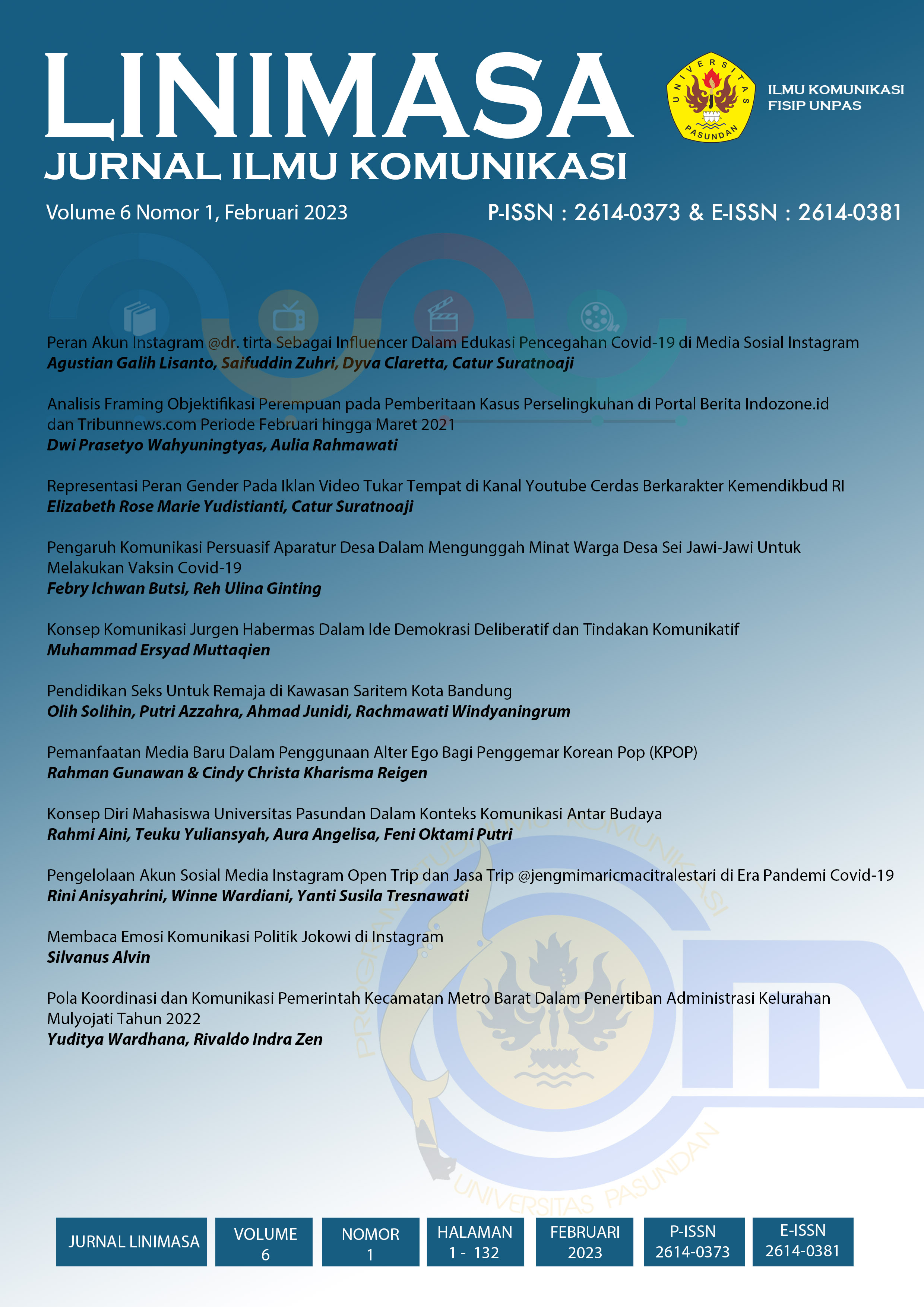KONSEP DIRI MAHASISWA UNIVERSITAS PASUNDAN DALAM KONTEKS KOMUNIKASI ANTARBUDAYA
Abstrak
University development and competition, both public and private, to be the best is now required. Each of these institutions, whether a university, institute, or high school, is required to be able to win interest and trust from the public, so it must pay attention and maintain good quality for its users. Organizational culture has an important role in an organization. Pasundan University implements three pillars in its organizational culture, namely "Nyunda, Nyantri, and Nyakola." Pasundan University, especially in the Communication Science Study Program, has various kinds of students from various regions who have their own cultures and habits. Cultural diversity is both a potential and a puzzle that always necessitates problem solving. Any uniqueness or something that implies the peculiarity of an area is basically wealth. The conception of a multicultural Indonesia is not only at the physical level but also at the level of consciousness. Indonesia, as an archipelagic country that has various cultures and customs, has as its motto "Bhineka Tunggal Ika," which means different but still one.Unduhan
Referensi
Daftar Pustaka
Alwisol. (2007). Psikologi Kepribadian. UMM Press.
Burns. (1979). The Self Concept : Theory, Measurement, Development and Behavio. Longman Group Limited.
Dayakisni, & Yuniardi. (2012). Psikologi Lintas Budaya. UMM Press.
Hall, E. (1959). The Silent Language. Doubleday.
Kulsum, U., Witurachmi, S., & Muchsini, B. (2017). Pengaruh Konsep Diri Dan Dukungan Sosial Keluarga Terhadap Kematangan Karir Mahasiswa. Jurnal Tata Arta, 3(2).
L.A Samovar, & R.E. Porter. (1991). Communications Between Cultures. Wodsworth Publishing Company.
Lestari, G. (2015). Bhineka Tunggal Ika: Khasanah Multikultural Indonesia Di Tengah Kehidupan SARA. Jurnal Pendidikan Pancasila Dan Kewarganegaraan, 28(1).
Lowie. (1917). Culture and ethnology. Douglas C. Mcmurtrie.
Maini Sitepu, J., & Sari Sitepu, M. (2021). Perkembangan Konsep Diri Anak Usia Dini Di Masa Pandemic. Jurnal CERED Seminar Nasional Teknologi Edukasi Dan Humaniora, 1(1).
Masturah, A. N. (2017). Gambaran Konsep Diri Mahasiswa Ditinjau Dari Persepktif Budaya (Vol. 2, Issue 2).
Moleong, L. J. (2007). Metodologi Penelitian Kualitatif. Remaja Rosdakarya.
Moustakas, C. (1994). Phenomenological Research Methods. Sage Publications.
Novianti, B. (2015). Tinjauan Konsep Diri dan Dimensinya Pada Anak Dalam Masa Kanak-Kanak Akhir. JPPK, 1, 116–124. http://ojs.unm.ac.id/index.php/
Puspasari. (2007). Mengukur Konsep Diri Anak, Cara Praktis bagi Orangtua untuk Mengukur dan Mengembangkan Konsep Diri AnaK. Alex Media Komputindo.
Thion’o. (1986). Decolonising the Mind: The Politics of Language in African Literature. James Currey.
Victoranto Amseke, F., Angela Daik, M., & Ariani Lewandri Liu, D. (2021). Dukungan Sosial Orang Tua, Konsep Diri dan Motivasi Berprestasi Mahasiswa Di Masa Pandemi Covid 19. Jurnal Muara Ilmu Sosial, Humaniora, Dan Seni, 5(1).
Yuliansyah, T. (2022). Konsep Diri Anggota Dewan Perwakilan Daerah Republik Indonesia (DPD-RI) Pada Konteks Komunikasi Antarbudaya. Jurnal Ilmu Komunikasi, 5(2).













